Are you a publisher, game developer, or game studio looking to get started with your own gaming environment? Then you’ve come to the right place! Designing and developing video games may seem like a daunting task – but it can also be incredibly rewarding. Whether this is the first time that you are diving into the world of game design and development, or if you’ve been on this journey for years – we have resources here that will help lead you down the path toward success. In this blog post, we’ll provide an introduction into what goes into establishing your game environment design.
Understanding the Concept of Environmental Design in Gaming
Video game environment design process is a pivotal facet of game development that involves strategically creating and manipulating virtual spaces within the game environment. It encompasses integrating visual, auditory, and interactive elements to craft immersive and compelling landscapes. The core objective of environmental design is to enhance the overall player experience by providing a contextually rich and aesthetically coherent backdrop that complements the game’s narrative and mechanics.
One fundamental aspect of environmental design is the creation of spatial layouts that serve both functional and narrative purposes. Designers employ architectural principles, such as spatial hierarchy, to guide player movement and focus.
Texture mapping, lighting, and shading techniques are crucial components of environment game design that contribute to the visual fidelity of the game world. By employing advanced rendering technologies, designers create realistic and visually stunning environments that evoke specific moods or atmospheres. Attention is given to details such as weather effects, time-of-day dynamics, and dynamic lighting, amplifying the immersive qualities of the virtual space.
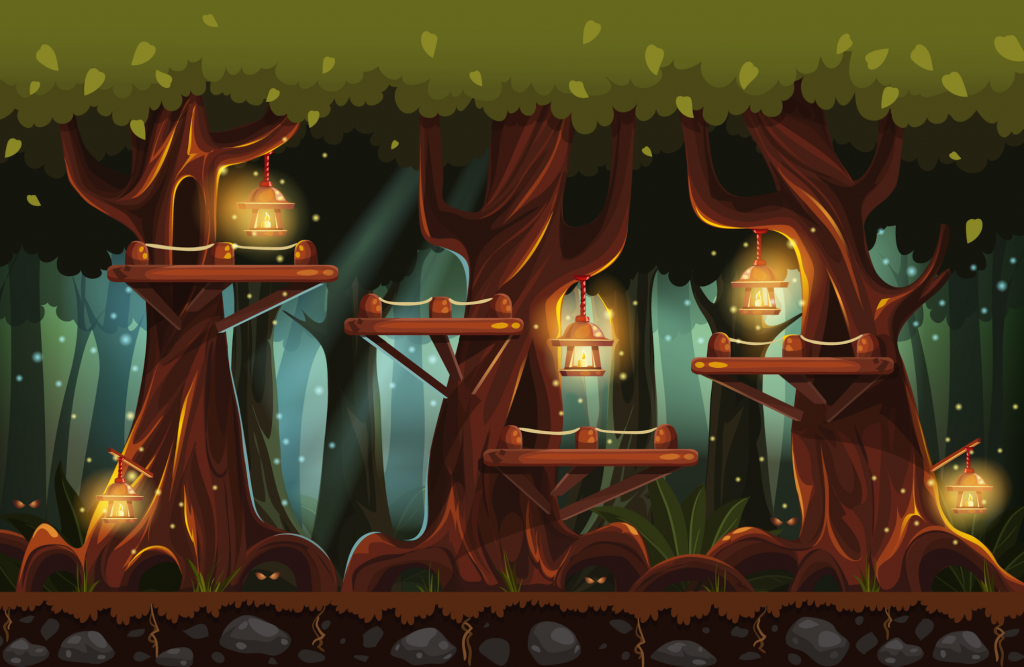
Diverse Categories of Game Environments
Game environments are diverse and multifaceted, comprising various categories that serve distinct purposes in the gaming ecosystem. Specific characteristics, functionalities, and design considerations define each category. Understanding them is vital for game developers aiming to create immersive and engaging worlds. The following delineation outlines some prominent categories of game environments:
Open World Environments:
- Definition: Vast, seamless landscapes that allow players unrestricted exploration.
- Characteristics: Non-linear, expansive, often feature dynamic day-night cycles and weather systems.
- Purpose: Facilitates player freedom, encourages exploration, and provides a sense of scale.
Linear Environments:
- Definition: Constrained spaces with a predetermined path for player progression.
- Characteristics: Focused and directed, guiding players along a defined route.
- Purpose: Narratively-driven, allows for controlled pacing and storytelling.
Hub Worlds:
- Definition: Centralized areas connecting various game levels or zones.
- Characteristics: Serves as a nexus for player activities, quest hubs, and resource hubs.
- Purpose: Facilitates player navigation between different game segments, often containing interactive elements.
Dynamic or Procedurally Generated Environments:
- Definition: Environments generated algorithmically, providing unique experiences in each playthrough.
- Characteristics: Infinite variability, responsive to player actions or external factors.
- Purpose: Enhances replayability, introduces unpredictability, and reduces design predictability.
Indoor or Enclosed Environments:
- Definition: Confined spaces such as buildings, dungeons, or structures.
- Characteristics: Often designed for specific gameplay mechanics, close-quarters combat, or puzzle-solving.
- Purpose: Varied gameplay experiences, focused challenges, and narrative progression.
Abstract or Surreal Environments:
- Definition: Non-realistic, imaginative landscapes that defy conventional rules.
- Characteristics: Often characterized by fantastical elements, dream-like aesthetics.
- Purpose: Creatively-driven, used to evoke emotions, challenge perception, and create unique atmospheres.
Simulated Real-World Environments:
- Definition: Replication of real-world locations with a high degree of accuracy.
- Characteristics: Detailed and authentic representations, often leveraging geographic data.
- Purpose: Offers realistic experiences, educational applications, or historical simulations.
Multiplayer Shared Environments:
- Definition: Virtual spaces where multiple players can interact simultaneously.
- Characteristics: Networking infrastructure to support real-time interactions, social features.
- Purpose: Facilitates collaborative or competitive gameplay experiences, fostering social connections.
Time-Varied Environments:
- Definition: Environments that change dynamically based on seasons, time of day, or specific events.
- Characteristics: Dynamic weather patterns, seasonal transitions, or time-of-day cycles.
- Purpose: Enhances realism, influences gameplay dynamics, and adds visual diversity.
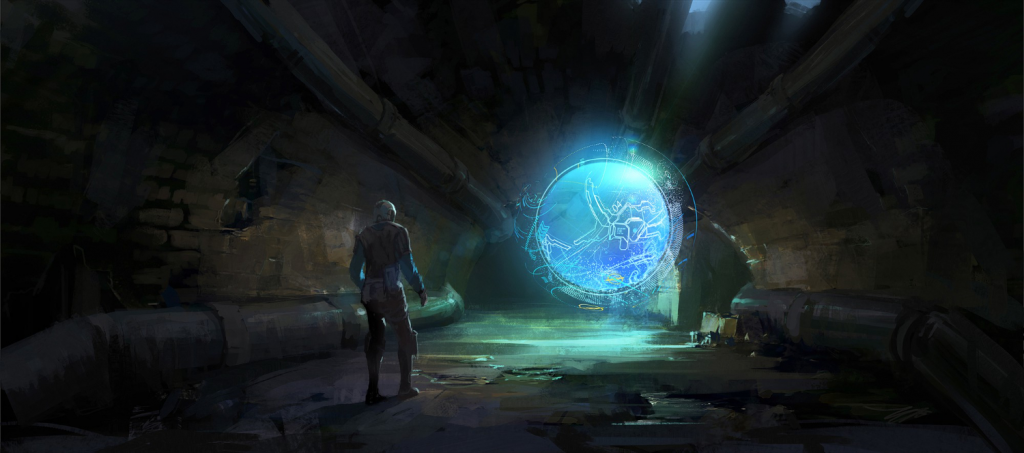
Environment Art Types Game Design
In game development, the process of 3D modeling serves as a cornerstone, facilitating the creation of intricate virtual environments. Two crucial facets of this process are high-poly and low-poly modeling, each serving distinct purposes in game environments’ optimization and visual fidelity. The synergy between those types is indispensable in the creation of an in-game environment. High-poly models enable the capture of intricate details, while low-poly counterparts ensure optimal real-time performance.
Developing High Poly
- Definition: 3D environment artist creates high-poly modeling involves the creation of 3D models with a substantial number of polygons, resulting in intricate detail and realism.
- Characteristics: High-poly models boast intricate geometry, nuanced surface details, and a high vertex count, allowing for a visually rich representation of objects or scenes.
- Purpose: Primarily utilized in pre-rendered cinematics, architectural visualization, and situations where visual fidelity precedes real-time performance. High-poly models are a foundation for creating detailed textures and normal maps for their low-poly counterparts.
Developing Low Poly Game Environments
- Definition: Low-poly modeling creates 3D models with a reduced polygon count, prioritizing efficiency and real-time rendering performance.
- Characteristics: Low-poly models exhibit simplified geometry, reduced vertex count, and optimized topology to ensure optimal performance during real-time rendering in games.
- Purpose: Essential for real-time applications, such as video games, where a balance between visual quality and performance is critical. Low-poly models are often augmented with normal maps and textures derived from high-poly models to convey the illusion of intricate details.
Crafting 3D Modeled Environments
Integration of High and Low Poly
The game environment modeling workflow often involves creating high-poly models, capturing intricate details and realism without immediate concern for performance.
Once the high-poly model is established, it serves as a reference for generating corresponding low-poly models that maintain the essential forms and visual characteristics while optimizing polygon count.
Normal maps, created from the high-poly model, are applied to the low-poly version to convey the illusion of intricate details without the computational overhead.
Terrain and Prop Modeling
Game environments comprise diverse elements, including terrains and props. Terrain modeling involves creating landscapes with elevation, textures, and foliage to establish the game world’s topography.
Prop modeling involves the creation of objects, structures, or assets that populate the environment, contributing to the overall visual narrative.
Texturing and Material Application:
High-quality textures and materials play a pivotal role in enhancing the visual appeal of game environments.
Texture mapping involves applying 2D images to the surfaces of 3D models, defining color, and specular information to simulate realistic materials.

Specifics of Game Environment Modeling Across Various Platforms
If you’re a gamer, you know that the environment in which you play can make all the difference in your gaming experience. Whether you’re playing on a console, PC, or mobile device, the specifics of game environment modeling can vary widely across all platforms. For example, a console game might offer more detailed graphics and larger maps, while a mobile game might focus on responsiveness and ease of use. Game environment modeling is critical for creating an immersive and engaging gaming experience regardless of the platform.
Modeling Game Environments for PC and Consoles
With the rise of gaming consoles and PCs, modeling game environments has become an art form in and of itself, with developers spending countless hours perfecting every detail to create immersive worlds for players. As technology continues to evolve, game environments will only become more detailed and realistic, elevating the gaming experience to new heights.
Selecting Your Preferred Style and Aesthetic
Selecting a preferred style and aesthetic in game design environments is a critical undertaking that significantly influences the overall player experience. This decision encapsulates visual choices, thematic elements, and the emotional resonance intended for the gaming audience. An authoritative approach to this selection process is paramount for aligning the design vision with the intended impact on the player.
Style refers to the distinctive visual characteristics that define the game’s overall appearance, encompassing choices such as realism, minimalism, or stylized representations.
Aesthetic encompasses the emotional and artistic tone, including color schemes, lighting, and thematic elements, contributing to the overall feel of the game environment.
The chosen style and aesthetic should harmonize with the genre of the game. For instance, a horror game might benefit from a dark, atmospheric aesthetic, while a casual or family-oriented game could leverage vibrant and friendly visuals.
The chosen style and aesthetic should extend cohesively across all design elements, including characters, environments, props, and UI components. This coherence contributes to a unified and polished visual identity. We can also add one more tip here. Clearly document the chosen style and aesthetic in game design document and style guides. Effective communication of the vision ensures a shared understanding among team members and collaborators, promoting consistency in execution.
Source: Kevuru Games Environment Art Portfolio
Exploring Game Engine Options
Depending on what you’re creating and your skill level, a specific engine might work better for you than another. You’ll want to consider factors such as price, ease of use, and the level of tech support you need. Many new game creators opt for engines like Unity or Unreal for their user-friendly interfaces, tutorials, and online support communities. However, some programmers may excel with engines like Godot or Lumberyard. Whatever you choose, remember that the engine is the foundation of your game, so take your time in finding the perfect fit for you.
Unity – widely used for its versatility, excellent community support, and vast asset store. Suitable for both 2D and 3D game environments;
Unreal Engine – known for its high-end graphics capabilities, real-time rendering, and robust development tools. Ideal for visually stunning and immersive game environments;
Godot Engine – open-source, user-friendly, and capable of handling both 2D and 3D game environments;
Lumberyard – backed by Amazon, Lumberyard offers robust graphics capabilities and seamless integration with AWS, making it suitable for creating visually compelling game environments.
Fundamental Steps for Commencing the Creation of an Exceptional Game World
First things first, brainstorm a solid concept and lay out a plan to execute it. Next, design your characters and give them unique traits and personalities that players can connect with. Building a game world wouldn’t be complete without creating immersive environments that make players feel like they’re truly a part of the game. Finally, never forget the importance of testing and tweaking until your game is as sharp as it can be.
Conceptualization and Design help to define the game environment’s visual theme, style, and narrative context. It covers concept art creation, design documentation, and establishing the overall visual identity.
3D Modeling is about creating 3D representations of objects, characters, and landscapes within the game environment. It involves high-poly and low-poly modeling, sculpting, and texturing.
Level Design means the patial arrangement of 3D models to create playable levels or environments. It covers layout planning, asset placement, and defining interactive elements.
Texturing and Material Application enhance the visual appeal of 3D models by applying textures and materials. This stage includes texture mapping, shader development, and material assignment.
Lighting and Atmosphere establish the desired mood, atmosphere, and lighting conditions within the game environment. It includes lighting design, dynamic lighting implementation, and atmospheric effects.
Animation and Interactivity it’s when animators implement animations for characters and interactive elements within the environment. They do rigging, animation creation, and scripting for interactive elements.
Sound Design Integration of audio elements enhances the immersive quality of the game environment. It includes sound effect implementation, ambient audio creation, and spatial audio design.
Optimization and Performance Enhancement stage ensures the game environment runs smoothly on target platforms. It covers polygon reduction, texture compression, and overall performance optimization.
Quality Assurance and Testing identify and rectify gameplay, visual fidelity, and performance issues. It is done by playtesting, bug identification, and iteration based on feedback.
Team Members Involved in Game Environment Creation
| Game Designers | Responsible for conceptualizing the visual theme, style, and narrative context of the game environment; |
| Concept Artists | Create visual concepts and reference materials that guide the overall aesthetic direction; |
| 3D Modelers | Develop high-poly and low-poly 3D models based on design and concept specifications; |
| Level Designers | Spatially organize 3D models to create playable levels or environments, considering gameplay dynamics; |
| Texture Artists | Create and apply textures to 3D models, enhancing visual fidelity and conveying material properties; |
| Lighting Artists | Design and implement lighting scenarios to establish mood and atmosphere within the game environment; |
| Animators | Implement animations for characters and interactive elements, bringing the environment to life; |
| Sound Designers | Integrate audio elements to enhance the immersive quality of the game environment; |
| Quality Assurance Testers | Identify and report issues related to gameplay, visual fidelity, and performance during playtesting. |
Exploring Advanced Techniques in Game Environment Modeling
The intricate details of the trees, the shadows cast by the buildings, and the subtle movements of the grass all work together seamlessly to create a truly captivating experience. Well, creating those environments is no easy feat. Game environment modeling involves a wide range of techniques and tools to bring these imaginary worlds to life. From advanced lighting and texturing to realistic weather patterns and physics, game developers are constantly exploring new ways to push the limits of what’s possible. It’s a fascinating and ever-evolving field that requires both technical expertise and a creative eye. So next time you’re exploring one of your favorite games, take a moment to appreciate all the hard work that went into creating that breathtaking world.
Incorporating Dynamic Elements for Interactive Environments
By including elements like motion sensors, sound effects, and responsive lighting, designers and engineers can create immersive experiences that engage all of our senses. These interactive environments are no longer limited to science fiction—they’re becoming more and more common in entertainment, hospitality, and even education. With the help of dynamic elements, we can create truly unforgettable experiences.
Five Critical Aspects to Enhance Your Game Environment Design
When it comes to creating the perfect game environment, there are a few critical aspects that you need to consider. Firstly, think about the overall aesthetic of your game. Will it be set in a post-apocalyptic world, or a fantastical land full of mythical creatures? Next, you need to focus on the gameplay mechanics. How will your players interact with the environment? Will there be puzzles to solve, obstacles to navigate, or enemies to fight? Thirdly, it’s important to consider the audio. Music and sound effects can bring your game world to life, so choose them wisely. The fourth aspect to consider is the level of design. How will you create interesting and challenging levels that keep your players engaged? And lastly, don’t forget about the narrative. A compelling story can elevate your game environment and keep players returning for more. With these five critical aspects in mind, you’ll be able to create a game environment that truly immerses your players and keeps them hooked for hours on end.
Illustrative Examples of 3D Environments in Games
Illustrative examples of 3D environments in games showcase the diverse and intricate landscapes crafted by game developers to immerse players in captivating virtual worlds. These examples demonstrate the technical prowess, artistic creativity, and attention to detail required to bring these environments to life. The following instances exemplify the exceptional use of 3D environments in gaming:
Battlefield V
Released in 2018, Battlefield V stands out as a pinnacle of game design environments within the Electronic Arts portfolio. The game is set against the backdrop of World War II, and its environments showcase a remarkable fusion of visual realism, strategic level design, and technical prowess.
Battlefield V boasts stunning visual fidelity, leveraging the Frostbite engine to deliver realistic and detailed environments. From the rugged landscapes of North Africa to the war-torn streets of Rotterdam, the game captures the essence of historical settings with unparalleled attention to detail.
One of the defining features is the dynamic and destructible environments. Buildings crumble, landscapes change, and the terrain evolves dynamically during battles, providing players with a sense of immersion and strategic depth. The level of environmental interactivity is a testament to EA’s commitment to pushing the boundaries of technical capabilities.
Birdly Insects Simulator
The Birdly Insects Simulator was developed by Kevuru Games for the BirdLife touring exhibition which was on display at about 50 locations throughout Switzerland in 2022. With the potential for an ecological catastrophe, the project seeks to raise public awareness of the insect extinction crisis. Their disappearance will lead to an environmental disaster.
With the help of the VR simulator, guests were able to become part of the insect world and fully immerse themselves. To soar like a butterfly over a flower meadow, feel the tiniest breeze brush against your wings, and discover the fascinating world of nearby insects and plants.
The environment’s total realism and the meticulous modeling of each grass blade enable viewers to comprehend and experience all of the ups and downs of an insect’s life. Because the grassy terrain is an exciting jungle for tiny organisms, there are areas of both beauty and danger. You may find more examples in our environment art portfolio.
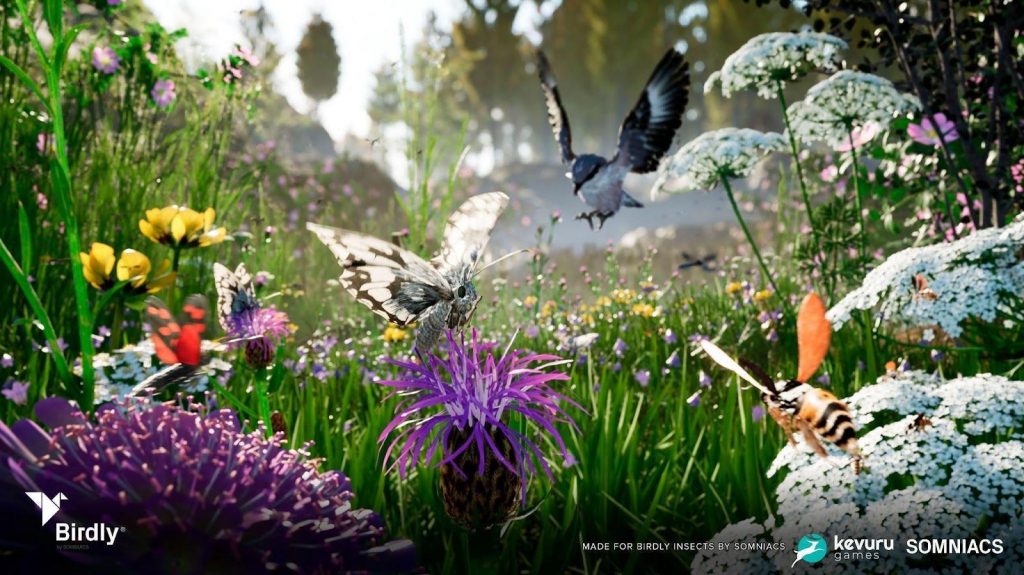
The Witcher 3: Wild Hunt
The game stands as a pinnacle in game design environments, showcasing an exemplary fusion of technical sophistication, artistic brilliance, and a commitment to immersive storytelling. Developed by CD Projekt, the game’s design environments exemplify industry-leading standards, setting a benchmark for open-world role-playing games.
The game introduces a vast and seamless open world, including diverse landscapes such as dense forests, sprawling cities, and war-torn villages. The sheer scale of the environment is a testament to the technical prowess of CD Projekt’s REDengine.
The game features a dynamic day-night cycle and dynamic weather systems that impact visual aesthetics and gameplay. This dynamic environment adds realism and affects NPC behavior and quest availability, contributing to a living, breathing world.
Kevuru Games expertise in Game Design Environment
When it comes to game environment design services, Kevuru Games is your team to develop a successful product. We know exactly how to create an environment art portfolio that immerses players and keeps them coming back for more. From the early stages of concept development to the final touches on a fully developed game, Kevuru Games never fails to impress. We have a dedicated team of experts who are creative and experienced – whether it’s the sound design, the level layout, or the intricate character animations. With 12 years in the game industry and extensive knowledge, we know a lot about game design.
We offer a full cycle of game development, as we can provide services for game design environments or character design. From the concept artists to the project manager, we have it all covered. We offer a wide range of 3D game environment art services, including:
- Fully executed development;
- Concept art;
- 2D environment artist and 3D art creation;
- Level design;
- Quality assurance and testing;
- Post-release support.


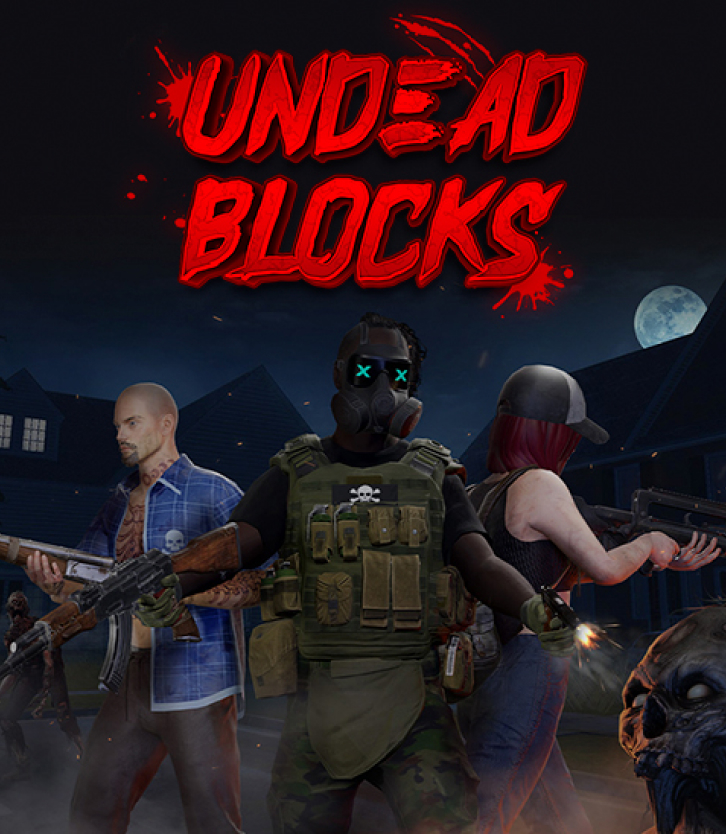



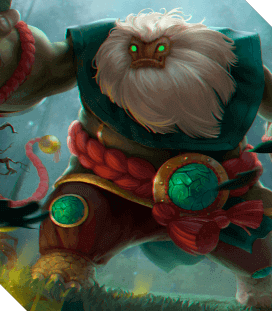

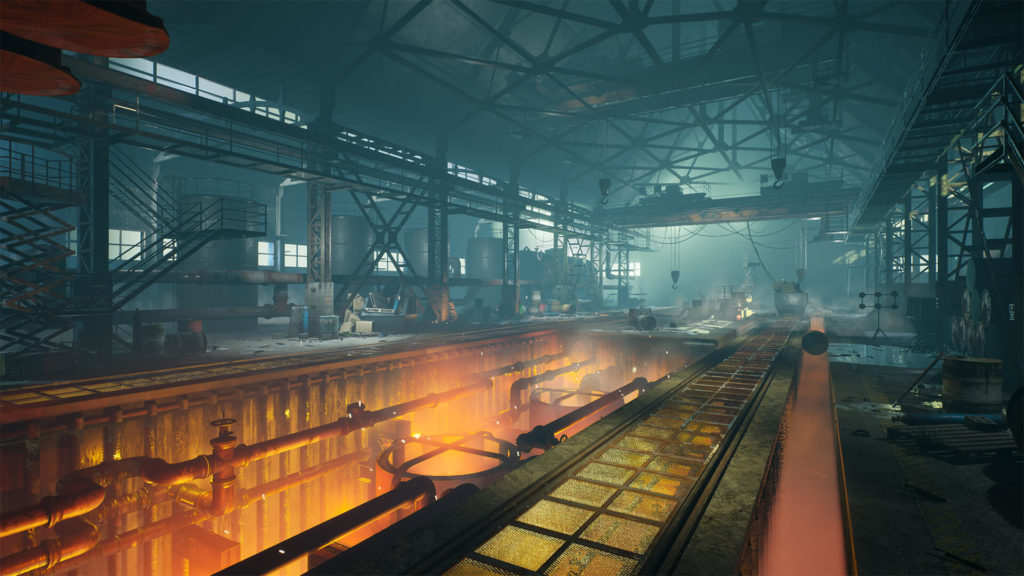
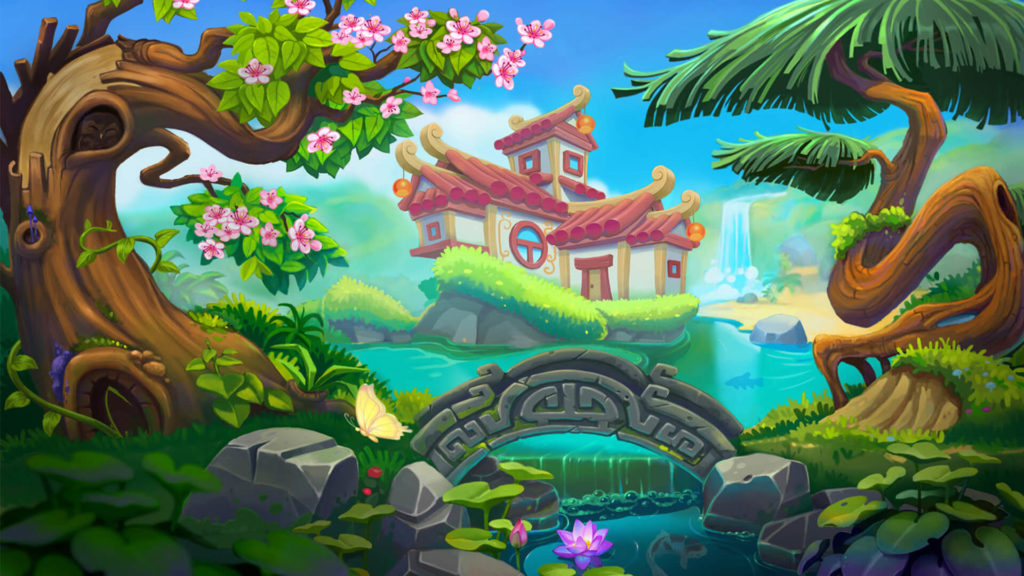


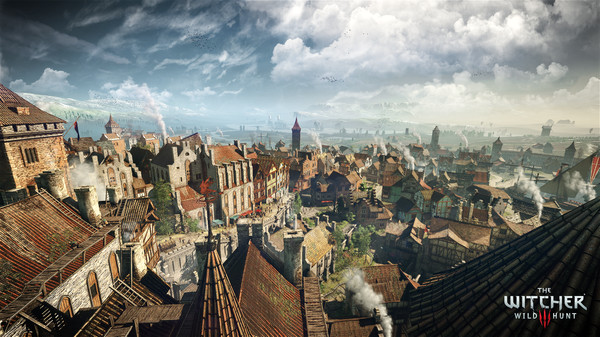


![Indie Game Development: Guide to Revenues, Most Profitable Genres & Monetization [+10 Best Indie Games 2024]](https://kevurugames.com/wp-content/uploads/fly-images/11949/indie-pre-138x138.jpg)